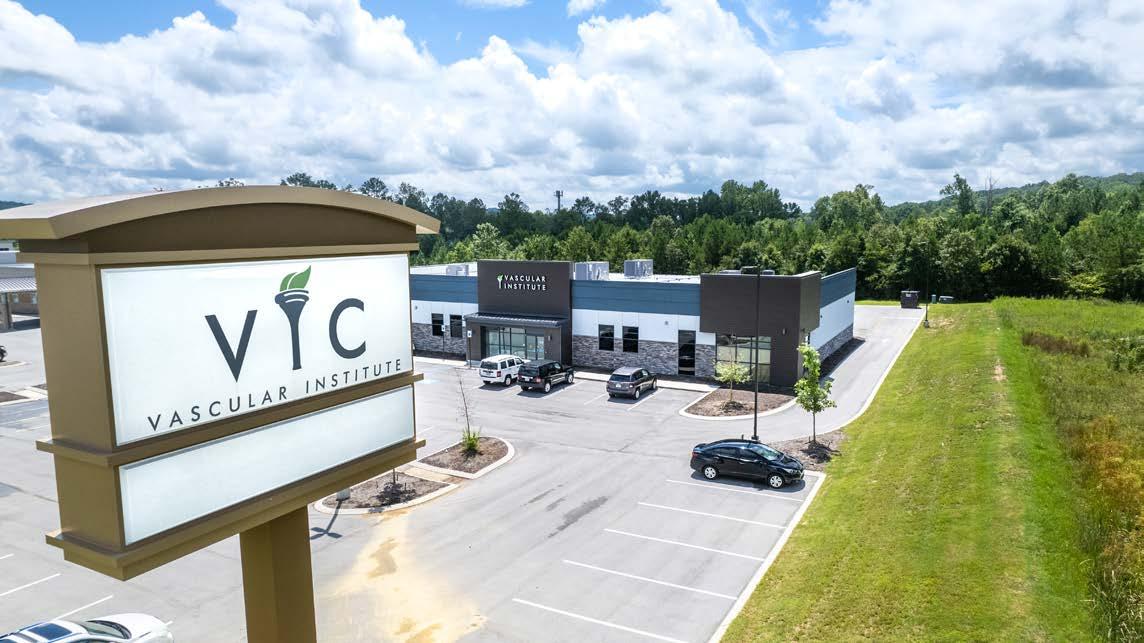
4 minute read
Saving Limbs and Restoring Lives: Why Every Community Needs A PAD Vascular Center
from September 2022
Peripheral Artery Disease (PAD) is a common circulatory problem in which narrowed arteries reduce blood flow to your limbs. When you develop PAD, your extremities—usually your legs— don’t receive enough blood flow to keep up with the demand of walking. This causes symptoms, most notably leg pain when walking (claudication) or weakness that can lead to falling.
Today over 22.3 million Americans suffer from PAD or blocked arteries, which causes over 185,000 amputations to be performed in the United States each year. Additionally, there is a regional disparity, with 40% of these amputation surgeries occurring in the southern states.
Advertisement
Many patients present with painful walking as their primary symptom. However, 40% of patients with PAD have an asymptomatic presentation or blame their leg issues on something else. Typically, people with PAD experience painful cramping in the hips, thighs, or calves with walking, climbing stairs or exercising. PAD puts patients at a greater risk for heart attack, stroke, and limb loss because the disease occurs in arteries all over the body.
A simple ankle-brachial blood pressure test can be performed, which is the first key to detecting disease. If the diagnosis of PAD is made, then a medical treatment plan can be put into place to reduce further damage to the arteries.
Many people with PAD have no identifiable symptoms or attribute their symptoms to something else, such as aging. Be evaluated if you are experiencing painful muscle cramping in the legs when you are walking or being active, and the pain does not stop with the activity.
Becoming aware of your risk factors and signs/ symptoms is the first critical piece to the puzzle, and a simple way to remember these is the word FLOW:
Feeling of Pain in the legs, Loss of Sensation, Open Sores that won’t heal, Weakness when walking.
In some cases, people with PAD may not experience symptoms until the disease is advanced. Those with severe PAD might have the following symptoms: • Leg muscle tiredness, heaviness or cramping • Toes or feet that look pale, discolored or blue • Leg or foot pain that disturbs sleep • Sores or wounds on toes, feet or legs that heal slowly or not at all • One leg or foot that feels colder than the other • Thick or yellow toenails that are not growing While PAD can’t be cured, it can be managed with appropriate treatment options. They include: • Clot removal: A catheter can be used to deliver drugs to dissolve a clot that restricts blood flow, or the clot can be removed directly to restore blood flow and preserve the limb. • Arterial surgery: Traditional treatment for PAD symptoms is to remove or bypass the arterial disease. Bypass is often the most preferred treatment in the legs or the abdomen, where the disease can be more extensive.
• Stenting and angioplasty: Less invasive than surgery, small balloons are used in the artery to open blockages. The balloon is inflated, stretches, and opens the artery for improved blood flow and is then removed. A stent, a metal device, can be inserted to expand the artery, enhancing blood flow to the leg. • Prescription medication: Drugs can be prescribed to lower cholesterol, control high blood pressure, control blood sugar, improve blood flow in the body, and prevent blood clots. Lifestyle changes are a great way to get to a healthier place. 1. Quit Smoking 2. Manage Diabetes 3. Control Blood Pressure 4. Reduce Cholesterol 5. Eat a Healthy Diet 6. Exercise Regularly 7. Establish Primary Care
Patients suffering from PAD have a window of time to seek and receive treatment to maintain a healthy blood flow and keep the “tissue” alive in the foot. Unfortunately, this message has NOT been communicated adequately to patients and families. As a direct result of delays in diagnosis and therapy, amputation surgery can be recommended. Amputation can often be the “simple solution” used by many surgeons to deal with the problem of gangrene. A PAD Specialist has many different tools and techniques to restore the blood flow to the lower leg, foot, and toes— often preventing the need for amputation. Always ask for a second opinion.
The dedicated staff of the Vascular Institute of Chattanooga always provides quality, dependable care to PAD patients from diagnosis to treatment. If you think you may suffer from any of the issues mentioned, ask for a referral from your primary care provider or call to make an appointment with one of the VIC surgeons or nurse practitioners.










